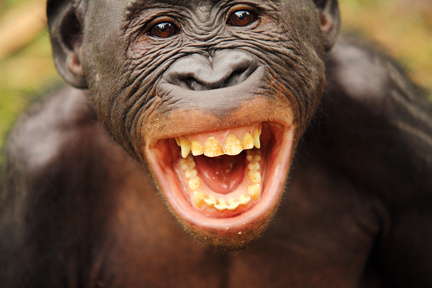By Ashley Yeager
Note: This is the second post in a four-part, monthly series that will give readers recipes to try in their kitchen and learn a little chemistry and physics along the way. Read the first post here.
Between bites of hot lava cake and vanilla ice cream, freshmen taking Chemistry and Physics of Cooking talk about diffusion. Their conversation isn’t so esoteric that an outsider wouldn’t understand.
Instead, it’s a simple chat about how long to cook a cake based on how heat moves.
Understanding diffusion is a way to make sense of cooking times, says chemistry and physics professor Patrick Charbonneau, who is leading the class along with chef Justine de Valicourt.
Diffusion of matter is how particles in a liquid, gas or solid intermingle and move from a region of higher concentration to one of lower concentration.
Heat diffusion describes how hot particles warm up cooler particles around them, which allows the inside of a dish to cook, even though only the outside is heated.
Before turning his students loose in a kitchen in Smith Warehouse to eat a product of this process, Charbonneau and his teaching fellows had the group work through the equations that describe diffusion.
“Solving the diffusion equations of heat gives you a first estimate of how long to bake a cake or cook a turkey,” Charbonneau says. The cooking time for lava cake is especially critical in order to get the outside it to bake, while the inside remains gooey, de Valicourt adds.
In class, the students calculated that to make a muffin-sized lava cake with ingredients at room temperature in an oven at 400°F (204°C) would take about 10 minutes. In the lab, they found that the calculation was fairly accurate, but for a more exact estimate of cooking time, they needed to factor in the temperature of melted chocolate chips in their recipe.
“Still, with the cooking time being not so mysterious, it’s one fewer thing left to chance,” Charbonneau says, adding, “then you can be more creative with the recipe in other ways.”
He and de Valicourt, who have partnered with the Alicia Foundation to offer the Chemistry and Physics of Cooking class, have provided the following recipe for experimenting with diffusion and hot lava cake.
Hot Lava Cake —
Ingredients:
60g (1/3 c) dark chocolate chips
60 g (1/2 stick) butter
60 g (1/4 c) sugar
3 eggs (or 2 egg and 45mL (3tbs) coconut milk)
30 g (1/4 c) flour
small pinch salt
Non-stick cooking spray
Materials:
1 bowl (bain-marie)*
4 ramekin dishes or 1 muffin tin
2 medium bowls
1 scale (if weighing ingredients)
1 sieve
1 cooking thermometer (optional)
* You can make a bain-marie by placing a bowl over a saucepan of simmering water.
Instructions:
1. Preheat the oven to 400°F/204°C.
2. Melt chocolate and butter on bain-marie. Stir. Do not boil the water or the chocolate could burn.
3. Combine eggs and sugar (and coconut milk) in a medium bowl and whisk until bubbly.
4. Combine flour and salt in another bowl and pass it through the sieve.
5. With one person whisking and another pouring, slowly add the chocolate mixture to the egg mixture.
6. Add the flour and salt to the wet ingredients and whisk well.
7. Spray ramekins or muffin tin with non-stick cooking spray.
8. Fill the ramekins or muffin tin a little more than halfway full.
9. Place the ramekins or tin in the oven on the middle rack.
10. Bake until the cakes start growing. The interior of the lava cake should be around 158-176°F/70-80°C and the outside around 203-212°F/95-100°C – ie until the edges of the cake are set, but the center is still a liquid – about 7 to 10 minutes (less for smaller cakes).

















